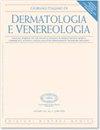Role of occupational and recreational sun exposure as a risk factor for keratinocytic non-melanoma skin cancers: an Italian multicentre case-control study.
IF 2
Q3 Medicine
Giornale Italiano Di Dermatologia E Venereologia
Pub Date : 2020-11-01
DOI:10.23736/S0392-0488.20.06699-7
引用次数: 3
Abstract
BACKGROUND Sun exposure is the main external risk factor for keratinocytic non-melanoma skin cancer (NMSC). Outdoor workers are at increased risk but the relationship of NMSC with occupational solar exposure is often confounded by concurrent recreational sun exposure. We compared the percentage of outdoor workers in NMSC patients versus controls without history of NMSC and assessed occupational and recreational sun exposure in both groups, evaluating also other risk factors and use of protective measures. METHODS Adult NMSC patients and controls without history of NMSC or actinic keratoses, matched for sex and age range, were recruited in Dermatology Departments of seven Italian University Hospitals, with a 1:2 patient/control ratio whenever possible. Data were collected using specifically designed questionnaires. RESULTS 834 patients and 1563 controls were enrolled. History of outdoor work was significantly (p=0.033) more frequent in patients. Patients were more sun exposed from outdoor leisure activities (p=0.012) and sunbathed for longer periods (p=0.13) and between 12 pm and 3.30 pm (p=0.011). Cumulative sun exposure during hobbies was similar between patients and controls in outdoor workers, higher (p<0.05) in patients among indoor workers. Patients and controls with history of outdoor work were more sun exposed at work than during leisure activities (p<0.001). Use of sunscreens by outdoor workers was very low, particularly at work (19.9%). Patients used sunscreens more than controls (p=0.002). CONCLUSIONS Occupational and recreational sun exposure are relev ant risk factors for outdoor and indoor workers respectively. Sunscreens are alarmingly underused, particularly at work, and are used mainly by patients.职业性和娱乐性阳光照射作为角化细胞性非黑色素瘤皮肤癌的危险因素:一项意大利多中心病例对照研究
背景:阳光照射是角化细胞性非黑色素瘤皮肤癌(NMSC)的主要外部危险因素。户外工作者的风险增加,但NMSC与职业性阳光照射的关系往往与同时娱乐性阳光照射混淆。我们比较了NMSC患者与无NMSC病史的对照组中户外工作者的百分比,并评估了两组的职业和休闲阳光照射,还评估了其他风险因素和保护措施的使用。方法招募意大利7所大学附属医院皮肤科的成人NMSC患者和无NMSC或光化性角化病病史的对照组,性别和年龄相匹配,患者/对照组比例尽可能为1:2。使用专门设计的问卷收集数据。结果纳入834例患者和1563例对照组。户外工作史在患者中更为常见(p=0.033)。患者在户外休闲活动中更多地暴露在阳光下(p=0.012),晒日光浴的时间更长(p=0.13),在下午12点至下午3点30分(p=0.011)。在业余爱好期间,室外工作者患者与对照组的日晒累积量相似,室内工作者患者日晒累积量较高(p<0.05)。有户外工作史的患者和对照组在工作时比在休闲活动时更多地暴露在阳光下(p<0.001)。户外工作人员使用防晒霜的比例非常低,尤其是在工作时(19.9%)。患者使用防晒霜的人数多于对照组(p=0.002)。结论职业性日晒和娱乐性日晒分别是室外工和室内工的相关危险因素。防晒霜的使用率低得惊人,尤其是在工作中,而且主要是患者使用。
本文章由计算机程序翻译,如有差异,请以英文原文为准。
求助全文
约1分钟内获得全文
求助全文
来源期刊

Giornale Italiano Di Dermatologia E Venereologia
DERMATOLOGY-
CiteScore
1.90
自引率
0.00%
发文量
0
审稿时长
6-12 weeks
期刊介绍:
The journal Giornale Italiano di Dermatologia e Venereologia publishes scientific papers on dermatology and sexually transmitted diseases. Manuscripts may be submitted in the form of editorials, original articles, review articles, case reports, therapeutical notes, special articles and letters to the Editor.
Manuscripts are expected to comply with the instructions to authors which conform to the Uniform Requirements for Manuscripts Submitted to Biomedical Editors by the International Committee of Medical Journal Editors (www.icmje.org). Articles not conforming to international standards will not be considered for acceptance.
 求助内容:
求助内容: 应助结果提醒方式:
应助结果提醒方式:


